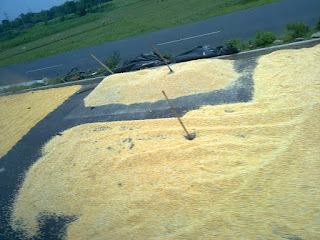How to Calculate Namaz Timings...
Muslims
have been ordained by Allah to offer prayers 5 times a day. The prayer timings
keep changing with the seasons, and most of us use a table available at the
local mosque to determine the time of prayer. These days, you can even download
and install a software on your mobile or computer that can tell you the time
based on your location. [1]
A lot of us
don’t know how namaz timings are calculated, and its pretty simple actually.
Even if you don’t have your cell phone with you or the table with the namaz
timings given on them, you can still determine whether its time for namaz or
not.
How? It’s
simple. There are 5 namaz times, and the duration within which that namaz can
be offered is calculated as below:
Fajr: This is the first namaz of the day
and is offered before sunrise. The time for Fajr begins when you can see dawn,
and ends just at sunrise. Mathematically, some people determine dawn when the
sun is 18˚ below the horizon, but for most of us, the early morning brightness
in the sky is a sufficient indicator.
Zohar: This is the second prayer, and is
offered after noon. The time for Zohar begins when the sun passes overhead, and
ends when the shadow of an object becomes twice its length. So when the sun
starts its descend in the sky, Zohar time starts, and lasts till the rays of
the sun make an angle such that Tan(θ)= ½, i.e. the length of the shadow of an object becomes twice its length, or when the length of the shadow becomes greater than the length of an object plus the midday length of the object.
Asr: It starts when Zohar ends, and
lasts till sunset.
Maghrib: Time for Maghrib starts after
sunset and lasts till the twilight can be seen in the sky. Just like Fajr, the
calculation is based on the sun going down certain degrees beneath the horizon,
but roughly, as soon as the sun sets, you should offer your prayers.
Isha: It starts after the twilight has
cleared from the sky and lasts till the time of Fajr begins. Some people say
that Isha should not be delayed till after midnight, but I reason that since
one could never know whether it’s midnight or not looking at the sky, one can
offer it any time before dawn.
So there we
go! An easy way to figure out Namaz timings!
Now for
directions for Namaz. Namaz is offered all over the world facing the Kaaba
at Mecca India pray
facing West, and the people in, say, Spain
How to
Calculate the Qibla Direction
During the
day, you can look at the Sun and determine the direction West, or East as it
may be. If you’re close to the Equator, then you can directly look at the Sun’s
direction for West. Otherwise, if you have an analog watch, then just point the
hours needle in the direction of the sun (provided you can see atleast the
figure of the sun if its cloudy), and look in the direction between the hours
needle and the 12 o’clock position. That direction is South. From there
you can easily calculate the other directions.
But how do
you decide which direction to pray to at night? That is where astronomy comes
in….
If you’re
in the northern hemisphere, first task is to locate the Big Dipper.
The Big Dipper is a group of stars in the Ursa Major constellation, and looks
something like a spoon or a ladle.
If you trace
the edge of the ladle, you will find the brightest star in that direction, the Polaris
or North Star, at about 5 times the distance between those of the stars
at the edge of the ladle. And Polaris always points to the North! Wallah, we
have found our way!
 |
| Big Dipper |
 |
| Locating Polaris |
And what if
the sky is cloudy or you’re in the Southern Hemisphere? Well, uhm, just make an
educated guess. You’d probably be forgiven as you gave your best shot… :D
May Allah forgive me if I'm wrong.
May Allah forgive me if I'm wrong.
[1] The Azan software I use (got any
better option?) http://searchtruth.com/mobile/azan/download_mobile_azan.php


Comments